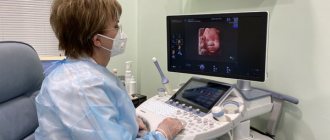The liver is at risk
It is believed that there are safe doses of alcohol and on the Internet you can find standards that seem to be recommended by the World Health Organization. In fact, the WHO warns that there is no safe dose of alcohol .
We know that there is a level of alcohol consumption at which the risk of various ailments is low, but the WHO does not set clear values for such doses; medical evidence suggests that it is safer for health not to drink. The more a person drinks, the higher the risk of getting sick. One of the serious but silently developing liver diseases can be alcoholic liver disease, which leads to cirrhosis.
Often a person simply has no idea about problems with the liver, since this organ is very patient - and until it is seriously damaged, it tries not to give away the existing problems. Therefore, it is better to periodically check the condition of the liver.
Will my liver hurt if I drink too much alcohol?
Since there are no nerve endings in the liver, it remains silent for a long time. Unpleasant sensations of heaviness in the right hypochondrium, pain and discomfort may appear due to stretching of the liver capsule when its size increases. As for jaundice, itching, dark urine and light-colored feces, these symptoms may be signs of hepatitis - damage and inflammation of liver cells of infectious or toxic origin. A more common symptom of liver disease is loss of energy and increased fatigue, but such a symptom can occur in many other diseases. If painful symptoms bother you, you need to get examined. It is especially important to do this for those who do not adhere to the principles of a healthy lifestyle or are forced to take medications for a long time.
How to watch out for liver disease? What tests should be taken regularly?
The best thing we can do for our liver is, without expecting symptoms, to regularly take a biochemical blood test from a vein once a year, checking the level of bilirubin (direct and total) and 4 liver enzymes (AST, ALT, TSH and GGT) . This test - Liver examination, basic - will allow you to evaluate the toxic effect of harmful substances on the cells of the organ. This examination is necessary if there is a suspicion of current liver disease or in conditions associated with both damage to the liver cells themselves and a violation of the outflow of bile.
An extended complex Liver examination is most appropriate for patients with existing liver diseases, both to assess the current condition and to assess the effectiveness of the treatment. In addition to the above-mentioned tests, this complex includes a test for prothrombin, the level of total protein and protein fractions is determined, and the ability of the liver to synthesize substances necessary for the body - cholinesterase and cholesterol - is assessed.
There are many different tests for liver disease. Which analysis is the most accurate?
Blood tests for total, direct and indirect bilirubin are an important marker for assessing liver function. They are usually prescribed for the appearance of jaundice, as well as for suspected liver disease (for example, hepatitis).
Alanine aminotransferase (ALT) is an enzyme found in liver cells. When liver cells are damaged, the level of ALT in the blood rises. Moreover, this happens long before the appearance of jaundice. A significant (more than 10-fold) increase in ALT levels is usually associated with either acute viral hepatitis or acute toxic liver damage. A moderate increase in ALT (several times) is characteristic of chronic viral hepatitis, impaired outflow of bile and chronic diseases of the hepatobiliary zone, as well as alcohol abuse and liver damage in infectious diseases.
The second enzyme, aspartate aminotransferase (AST), is less indicative, but important in the comprehensive diagnosis of liver function. It is usually prescribed along with an ALT test.
An increase in alkaline phosphatase (ALP) can be observed in cases of impaired bile outflow and other liver diseases, as well as in any forms of cholestasis (difficulty in bile secretion).
GGT (gamma-glutamyltransferase) is an enzyme involved in the metabolism of amino acids. Its increased concentration in the blood serum is most often a marker of difficulty in the outflow of bile, as well as intoxication caused by alcohol or drugs. A blood test for GGT is important for diagnosing many liver diseases.
Why is there not one test; to assess liver function, they always suggest taking a set of tests?
In fact, it is very important to take all tests as a whole, because it is important to change each of the indicators in combination with each other. For example, high AST levels may indicate not only liver problems, but also damage to the heart muscle. Or, say, a simultaneous increase in GGT and alkaline phosphatase suggests cholestasis, but if GGT increases in isolation from alkaline phosphatase, then one can suspect that the whole issue is due to long-term alcohol consumption. An increase in alkaline phosphatase with normal GGT values most likely does not indicate liver disease, but rather the presence of bone tissue diseases.
PsyAndNeuro.ru
Liver tests are commonly referred to as laboratory blood tests performed to check liver function. These include tests for parameters such as alanine aminotransferase (ALT), aspartate aminotransferase, alkaline phosphatase, gamma-glutamyltransferase, bilirubin and albumin. Abnormal liver test results are relatively common in psychiatric practice. In patients with severe mental illness, the risk of liver disease may be increased by obesity (and by extension nonalcoholic fatty liver disease), alcohol abuse, viral hepatitis, use of potentially hepatotoxic drugs, and intentional self-harm (eg, paracetamol overdose).
Abnormal liver tests do not always indicate liver disease. In the general population, a third of men and a quarter of women with abnormal liver tests (ALT levels twice the upper limit of normal) have no identified pathologies. Moreover, in 20% of healthy volunteers taking placebo during clinical trials, ALT increased to levels three times the upper limit of normal; In the general population, 12% of people have at least one of the liver test values outside the normal range.
It is important to consider the clinical context in which abnormal liver function tests are observed, as well as the extent of the abnormality. If ALT/AST is elevated to less than three times the upper limit of normal and the patient has signs of obesity and/or metabolic syndrome but no obvious risk factors for liver disease, then it makes sense to consider a diagnosis of nonalcoholic fatty liver disease. In this case, the patient is recommended to change his lifestyle in order to reduce body weight. After 2-3 months, liver tests need to be repeated.
If ALT/AST is elevated more than three times the upper limit of normal or alkaline phosphatase levels are elevated, then you need to pay attention to other possible causes, if necessary, referring the patient for consultation with a gastroenterologist.
Antipsychotics:
Clozapine, olanzapine, risperidone, quetiapine, aripiprazole, haloperidol. chlorpromazine
Antidepressants:
Sertraline, paroxetine, fluoxetine, citalopram/escitalopram, fluvoxamine, venlafaxine, duloxetine, mirtazapine, agomelatine, bupropion, trazodone, imipramine, amitriptyline, iproniazid, phenelzine, moclobemide
Mood stabilizers and other drugs:
Carbamazepine, valproic acid, lamotrigine, topiramate, pregabalin, lithium, benzodiazepines
About a third of patients taking antipsychotics have at least one liver function test abnormal, and 4% have at least one liver function test three times the upper normal level. Typically, changes in liver function tests are detected fairly soon after starting antipsychotics, in most cases within 1-6 weeks. However, liver damage caused by antipsychotics is usually minor and temporary, so stopping the drugs is not always necessary.
Abnormal liver tests are most common when taking clozapine. The average likelihood of clozapine-induced hepatitis (ALT twice the upper limit of normal) is 17%, but most patients do not worsen the condition, and liver tests normalize in 60% of cases without stopping clozapine.
Hepatotoxicity is common to all antidepressants and is more common in elderly patients when multiple drugs are used simultaneously. In 0.5-3% of patients taking antidepressants, a slight increase in transaminase levels is observed. Clinically significant deterioration in liver function is rare.
In most cases, drug-induced hepatitis is not dangerous, and the condition improves after stopping the medication. Drugs such as paracetamol produce a dose-dependent toxic effect. But, as for antipsychotics and other psychotropic drugs, the hepatitis caused by them is an idiosyncratic reaction, unpredictable and independent of dose. Risk factors include older age, female gender, alcohol consumption, non-alcoholic fatty liver disease, obesity and previously diagnosed liver disease. Transient and minor deviations in transaminase levels occur while taking many antipsychotics and antidepressants; however, it is important not to miss the development of hepatitis in order to stop taking the drug in time.
You can follow this rule:
If
- ALT or AST more than three times the upper limit of normal;
- total bilirubin is more than twice the upper limit of normal;
- there is reason to believe that the reason is due to the use of the drug,
then it is necessary to consider the possibility of discontinuing the drug if
- ALT is more than five times the upper limit of normal,
then the drug must be discontinued immediately if
- ALT was higher than normal before treatment, and during treatment it increased more than threefold,
then we need to consider the possibility of discontinuing the drug.
The decision should be made based on the balance between the risk of continuing treatment (potentially irreversible liver damage) and the risk of stopping treatment (deterioration of mental status).
Author: Filippov D.S.
Source : Lally J., Considine A., Agarwal K. Deranged Liver Function Tests. in The Maudsley Practice Guidelines for Physical Health
Alanine aminotransferase (ALT)
The study of ALT and AST activity in blood serum is extremely important for the diagnosis of liver diseases.
The increase in their activity is directly proportional to the degree of necrosis of the liver tissue. Serum ALT activity is primarily and most significantly affected by liver disease. An increase in ALT activity by 1.5-5 times compared to the upper limit of normal is considered moderate hyperenzymemia, 6-10 times as moderate hyperenzymemia, and more than 10 times as high. The degree of increase in ALT activity indicates the severity of necrosis of liver cells, but does not directly indicate the depth of violations of the liver functions themselves.
In acute hepatitis, regardless of its etiology, ALT activity increases in all patients. In this case, the level of ALT increases 10-15 days before the appearance of jaundice in viral hepatitis A, and for many weeks in viral hepatitis B. In the typical course of acute viral hepatitis, ALT activity reaches its maximum at the 2-3rd week of the disease. If its course is favorable, the ALT level will normalize within 30-40 days. Typically, in acute viral hepatitis, the level of ALT activity ranges from 500 to 3000 IU/l.
A repeated and progressive increase in ALT activity indicates new necrosis of liver cells or relapse of the disease. Prolongation of the period of increased ALT activity is often an unfavorable sign, as it may indicate the transition of acute hepatitis to chronic.
In acute alcoholic hepatitis, AST activity is higher than ALT, but the activity of both enzymes does not exceed 500-600 IU/l.
Chronic hepatitis is characterized by moderate and moderate hyperenzymemia. In latent forms of liver cirrhosis, an increase in ALT activity may not be observed.
In patients with toxic hepatitis, infectious mononucleosis, intrahepatic cholestasis, cirrhosis, and liver metastases, AST activity is higher than ALT.
An increase in ALT activity can also be detected in asymptomatic carriers of hepatitis B surface antigen, which indicates the presence of apparently asymptomatic active processes in the liver.
Medical nutrition in the postoperative period
In the immediate postoperative period, it is necessary to establish parenteral nutrition for the patient. First of all, this concerns the introduction of energy substrates. The volume and composition of parenteral nutrition is determined individually depending on the patient’s needs.
Stabilization of the patient's condition and controlled diarrhea are indications for switching to nutrition using the gastrointestinal tract. This usually occurs 3-4 days after surgery. However, for large small bowel resections, some experts recommend starting enteral nutrition 2–4 weeks after surgery. In most clinical cases, standard mixtures for enteral nutrition are prescribed, however, for resections of the small intestine, it is advisable to use depolymerized nutrients (semi-element diets). Combined parenteral-enteral nutrition in the complex rehabilitation of patients after intestinal surgery can reduce the time and increase the effectiveness of rehabilitation treatment, significantly reduce the incidence of complications and adverse outcomes of the postoperative process.
If the patient’s condition improves, a transition to natural nutrition is recommended. However, it should be remembered that unreasonably early transfer of patients to natural nutrition after intestinal surgery significantly worsens the course of the recovery period, stimulates the development of enteral insufficiency syndrome, and disrupts the natural mechanisms of cavity and membrane digestion.
After artificial nutrition, patients are prescribed diet No. 0a. However, this diet is characterized by extremely low nutritional value (750-800 kcal) and the patient’s body experiences nutritional starvation during the entire time of its use. As a result, tissue repair mechanisms are significantly inhibited, creating conditions for the formation of an unfavorable course of the disease. Therefore, dietary treatment using diet No. 0a requires simultaneous parallel parenteral nutrition of patients.
If diet No. 0a is well tolerated and there is no diarrhea, after 2-3 days, patients should be transferred to diet No. 1a. It is prescribed for 2–4 days after diet No. 0a. However, if it is possible to carry out parenteral nutrition (transfusions of protein-energy mixtures) and in the presence of at least minimally severe diarrhea, the prescription of diet No. 1a should be postponed for several days.
If diet No. 1a is well tolerated, the patient is transferred to diet No. 1b.
Usually, by 14–15 days after intestinal surgery, the administration of basic diet No. 1 is recommended. In this case, the patient should adhere to the pureed version of the diet for a long time, even after transferring to outpatient treatment.
3-4 weeks after the patient is discharged from the hospital, a gradual transition to the unpureed version of diet No. 1 is required. The gradual transition from one diet option to another involves a daily reduction in the number of pureed dishes. Good tolerance of the introduced dishes is evidence of the normalization of the secretory and motor-evacuatory functions of the digestive system and allows for continued expansion of the diet.
If the dynamics are positive, after 5-6 weeks the patient is transferred to diet No. 15.
If milk is poorly tolerated, patients after intestinal surgery should avoid milk consumption for a long time (sometimes forever). Lactose overload in the presence of enzyme deficiency can aggravate secretory intestinal disorders. Thus, with the development of postoperative lactose deficiency in the diet of patients, whole milk should be limited as much as possible and for a long time. This applies to a lesser extent to the consumption of lactic acid products. Dairy products can be successfully replaced with soy products. Soy proteins are a very important source of additionally providing the body with highly plastic protein.









